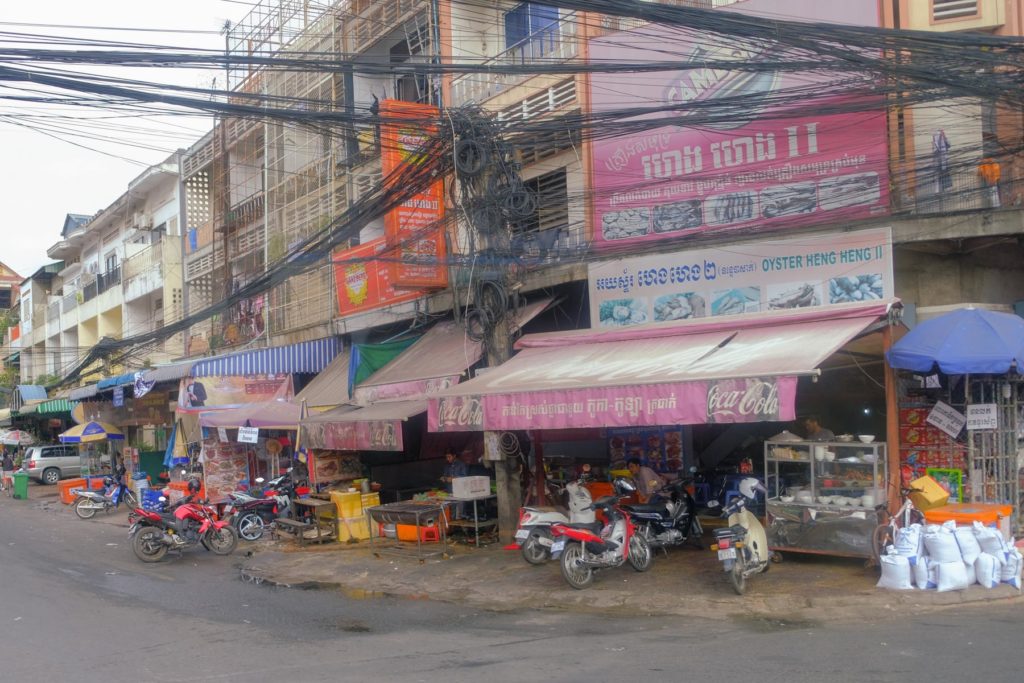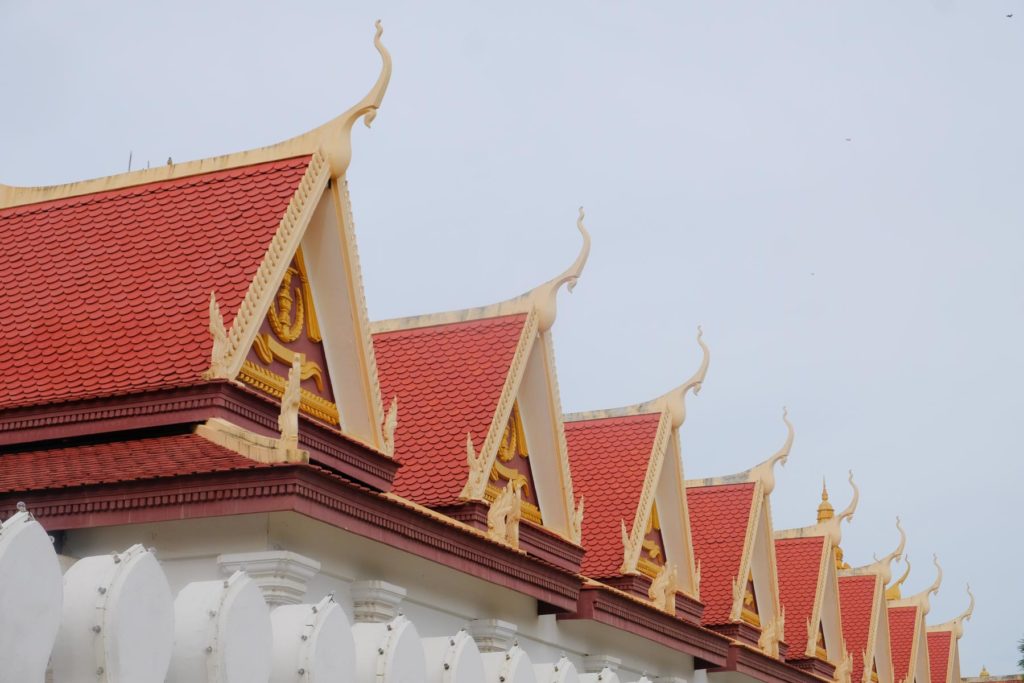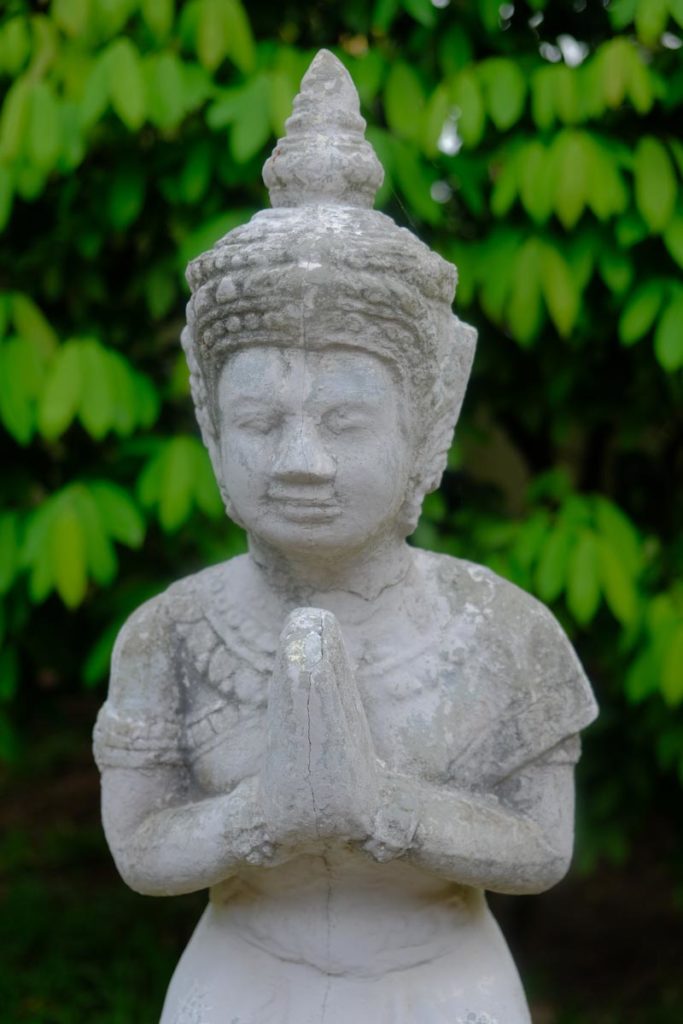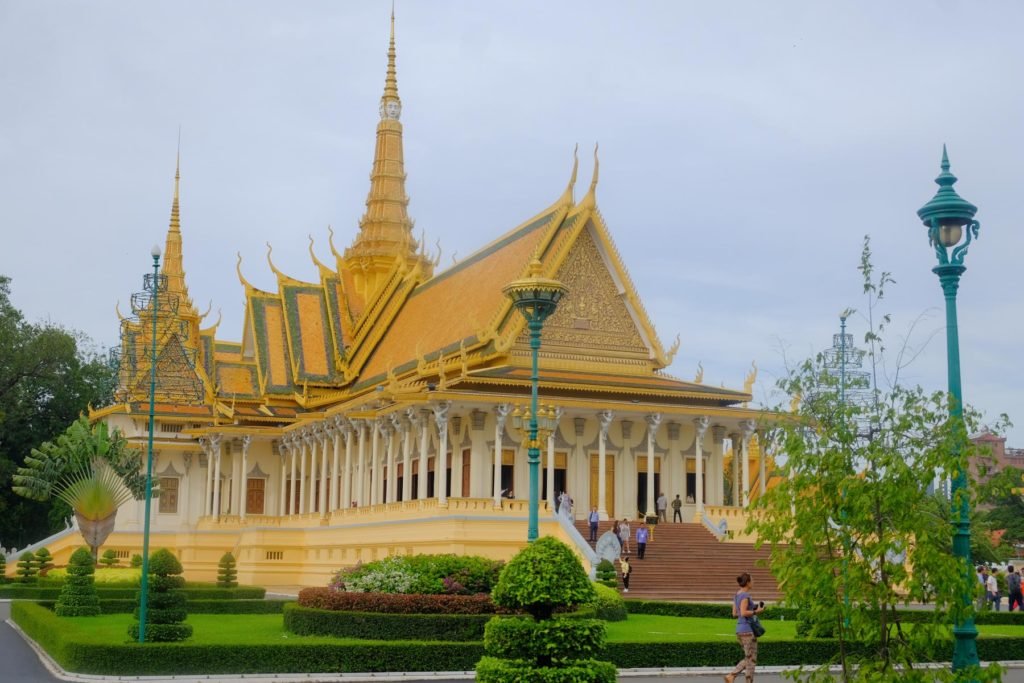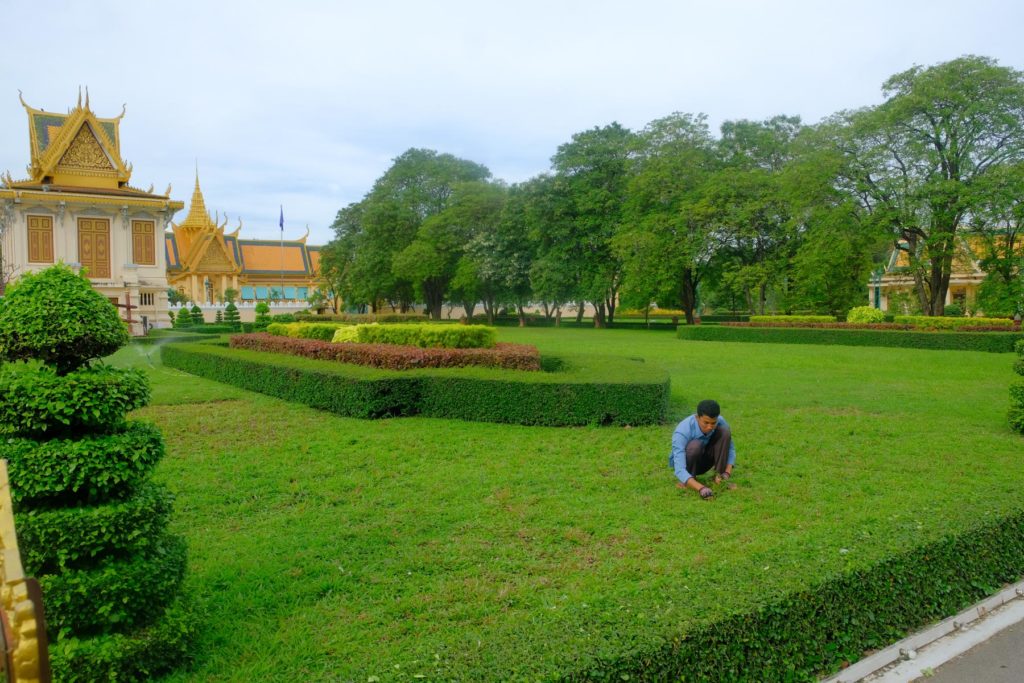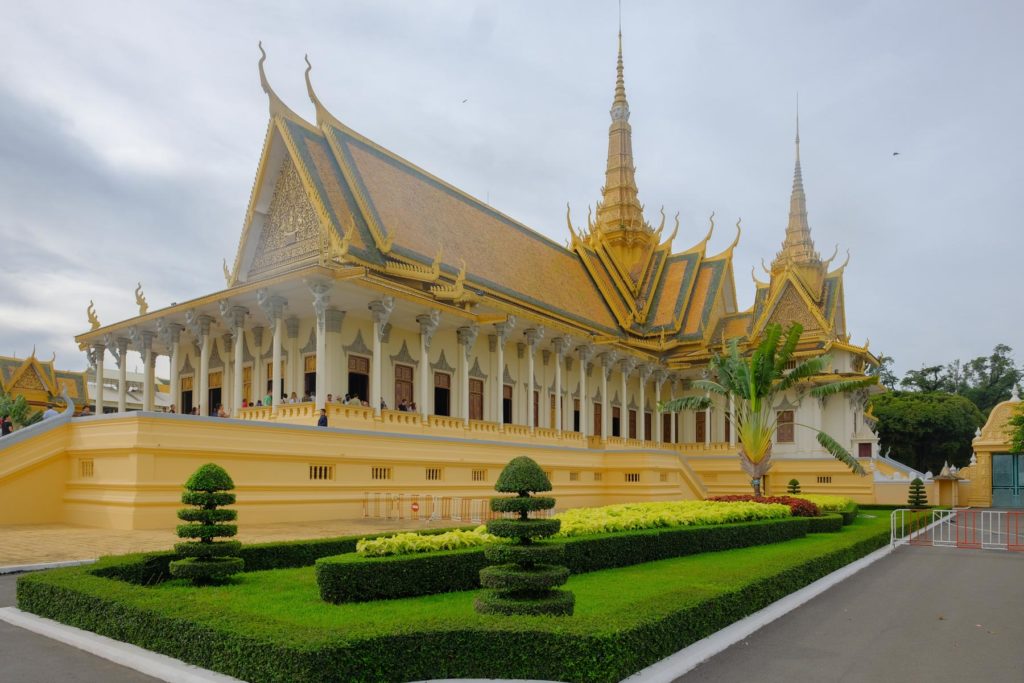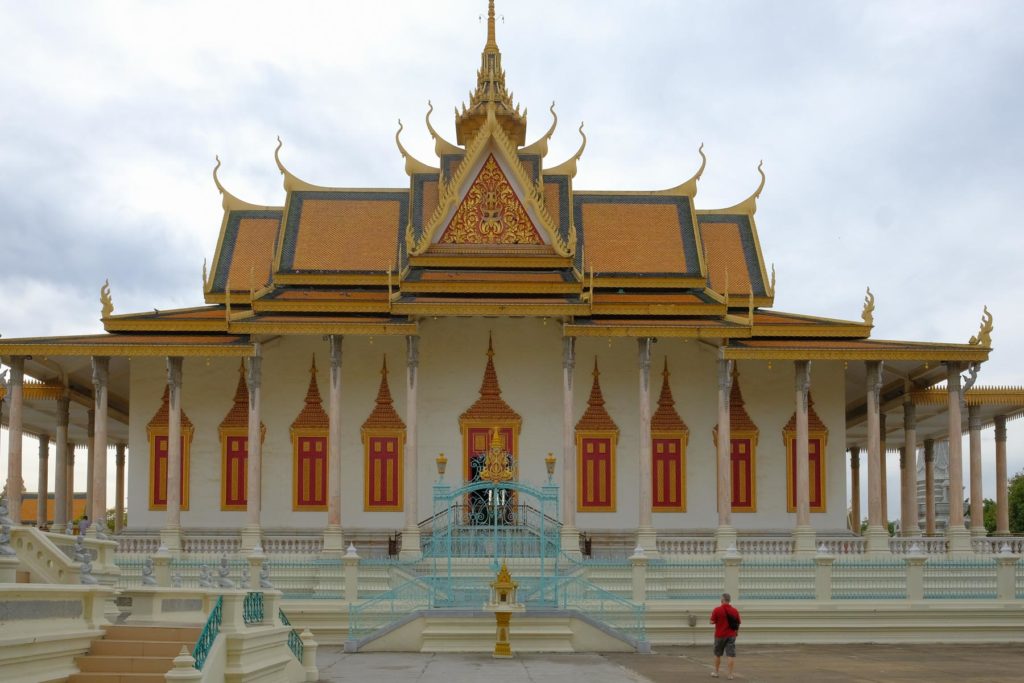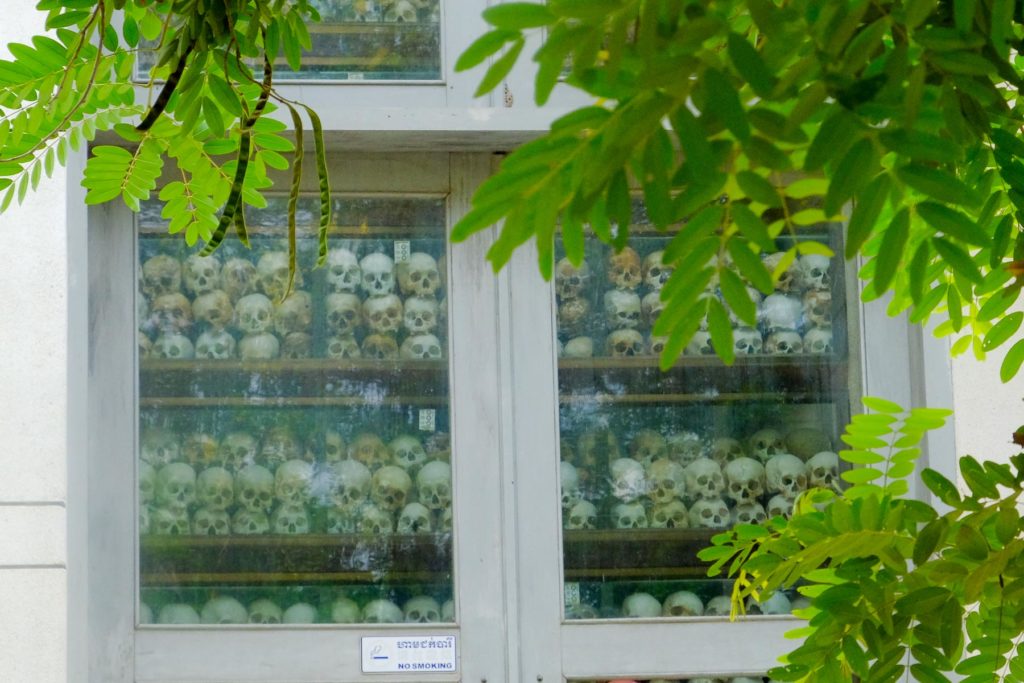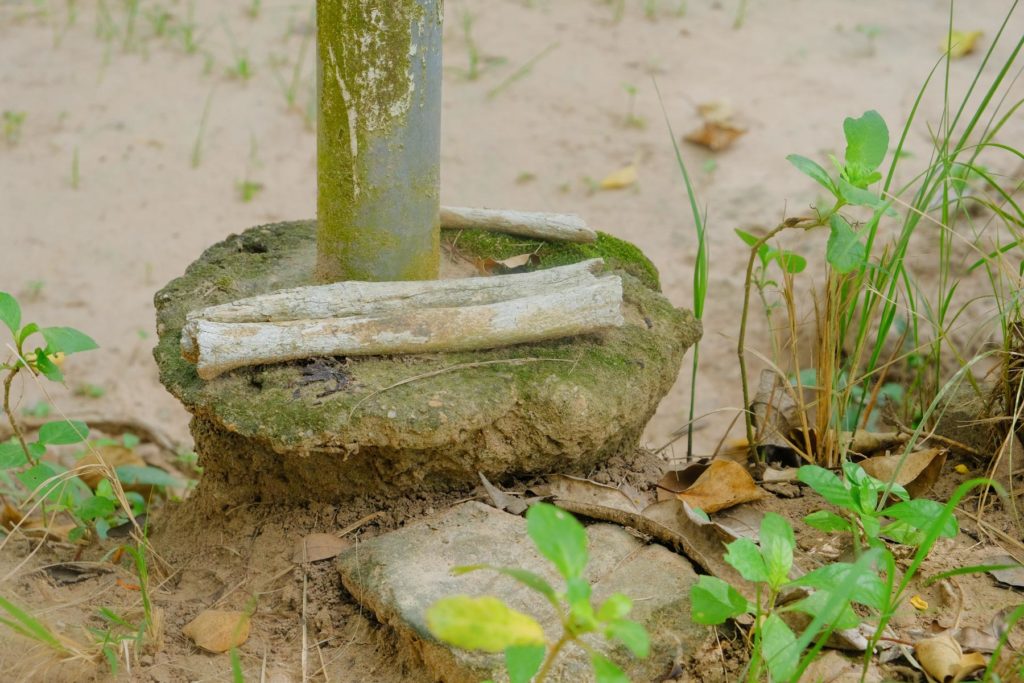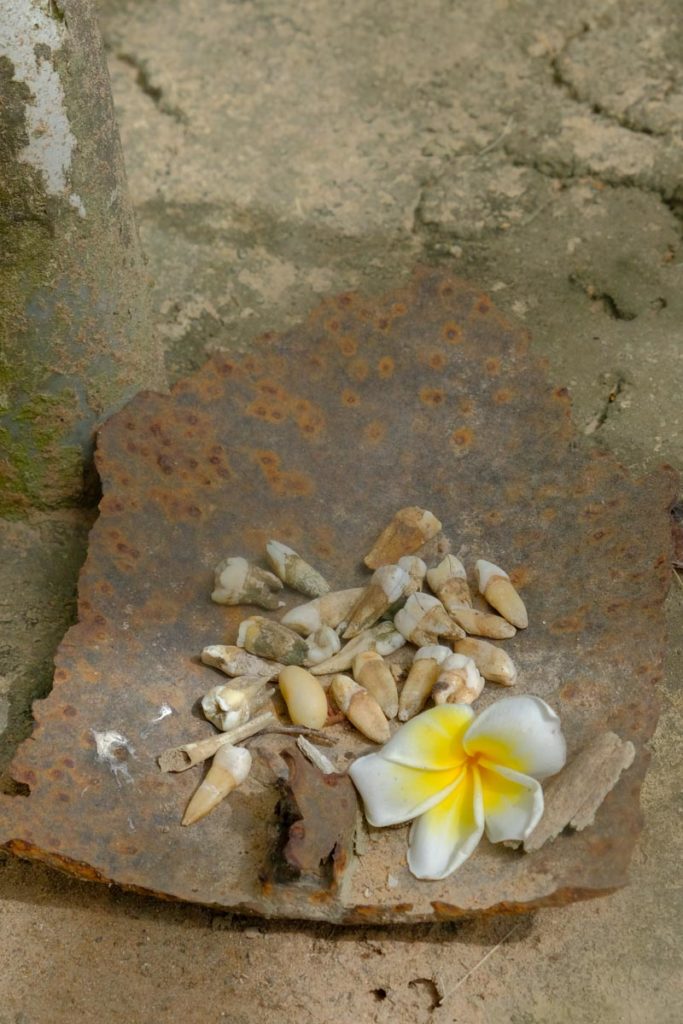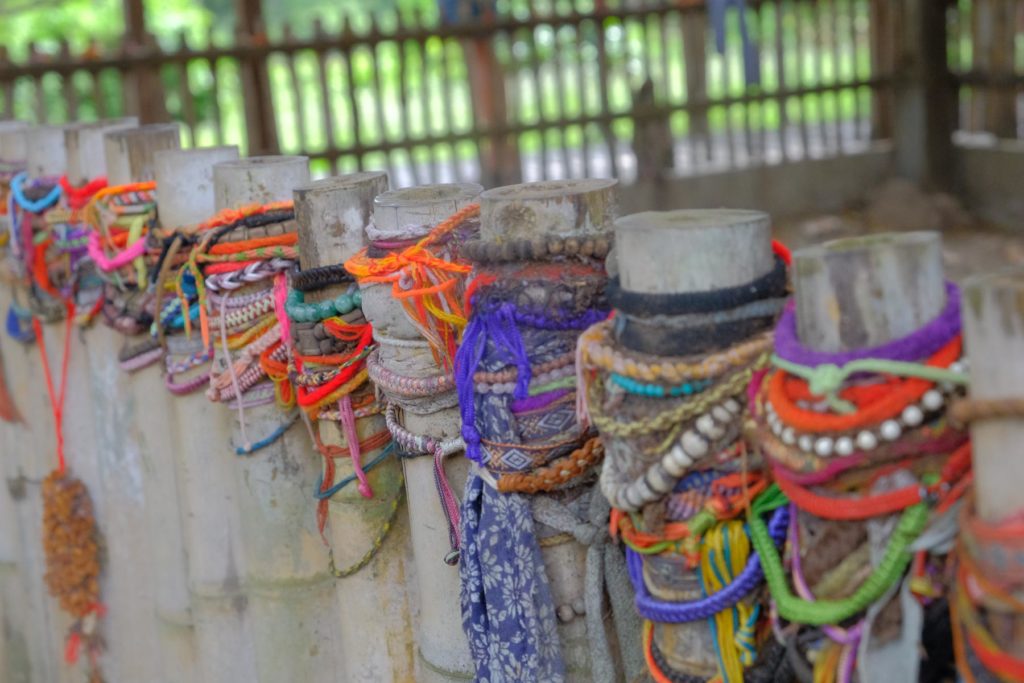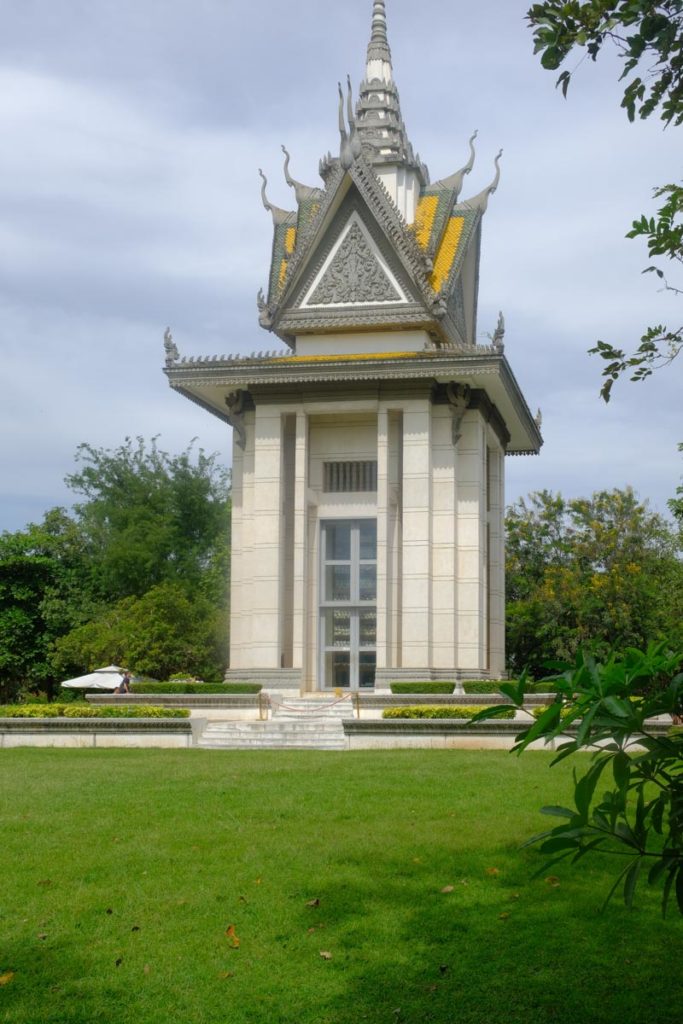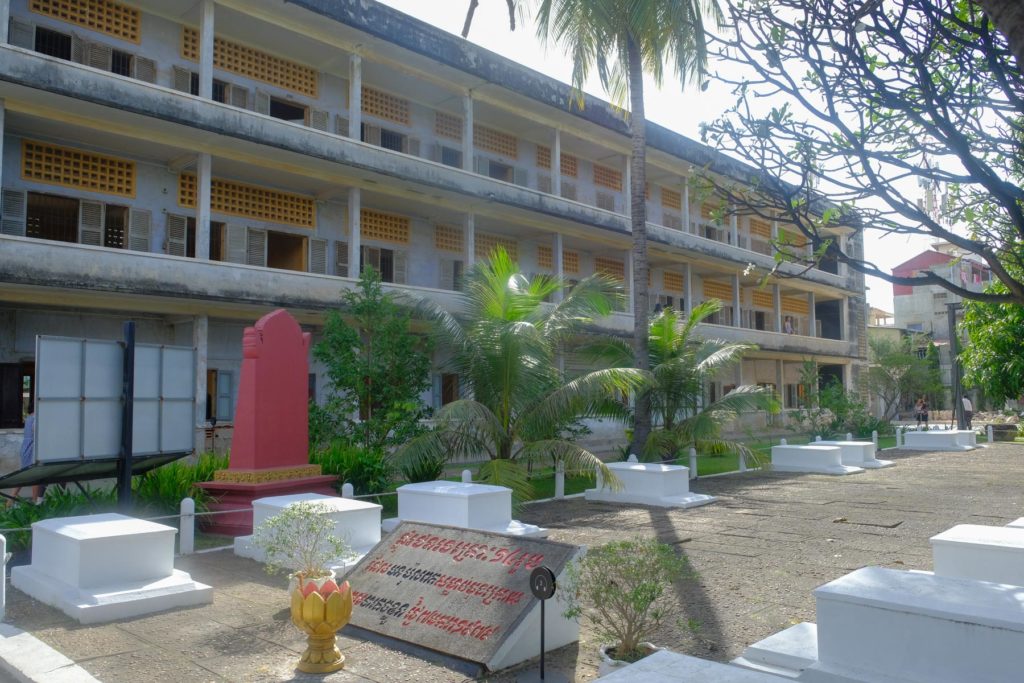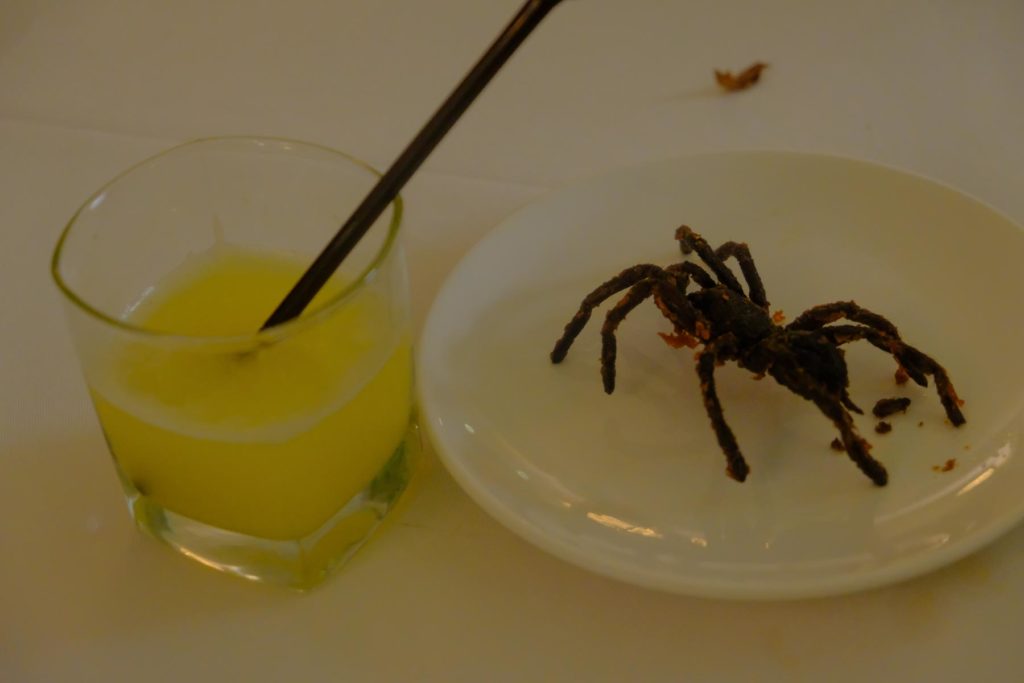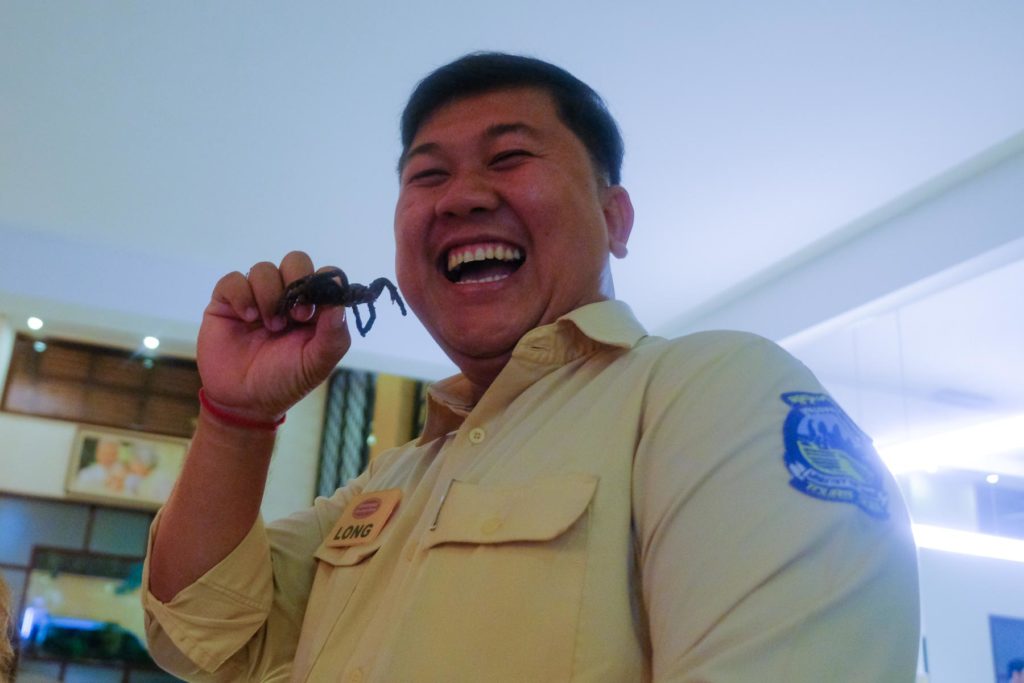If you had asked me last night what I thought of our Cambodian guide Long I would have said, “Nice guy, funny, lots of jokes (‘In Cambodia we have freedom of silence’ and ‘In Cambodia we solved the problem of which side of the road to drive. We drive on both’) but not enough substance. Why did we have to see a shopping mall just like what we have back home, and the amusement park full of kids on rides on a Thursday night? How about some factual detail, Long?”
This afternoon after visiting the Killing Fields here in Phnom Penh my opinion has changed 180 degrees. He gave the best tourist guide presentation I’ve ever experienced.
In case you, like me, never did quite catch on to the key players in this horrific period of genocide, here’s a quick synopsis.
– Norodom Sihanouk set up independent Cambodia at the end of WWII.
– In 1965 Sihanouk broke off relationship with the U.S. at the beginning of the Vietnam War and continued to suppress dissidents in Cambodia, including the Communists.
– In 1970 U.S.-backed Lon Nol kicked out Sihanouk and established the Khmer Republic. The U.S. continued to carpet bomb the Ho Chi Minh trail in Cambodia.
– In 1975 the Khmer Rouge led by Pol Pot kicked out Lon Nol. Mass killings begin of dissidents opposed to Pol Pot’s Democratic Kampuchea government. Starvation is rampant.
– In 1979 Vietnam (now united North and South) invades Cambodia and evicts Pol Pot. Vietnam retained troops in Cambodia until 1989 when Soviet support for Vietnam disappears.
– The U.N. tries to broker elections and peace but Pol Pot and the Khmer Rouge continue to fight a guerilla civil war until Pol Pot dies in 1998.
The Killing Fields were active during the 1975-1979 period. More than one million Cambodians were executed; up to three million died in all. “Dissidents” included anyone loyal to the previous Lon Nol government and those supporting “CIA and KGB” operations in Cambodia. In the end anyone with any kind of professional education was swept up in the purge. As I mentioned earlier only two physicians survived execution by 1979.
Families were uprooted from cities and sent to work on farms in the countryside (see the book and movie “First They Killed My Father” by Loung Ung). As dissidents were uncovered they were sent to Special Administrative unit for recording, photographs and torture. They were then sent by truck in shackles to the Killing Fields. There they were executed upon arrival in the most brutal manner imaginable.
The most moving story that captured the horror of the Killing Fields was that of Long’s father. Long’s father was a schoolteacher. His mother, three sisters and two brothers were swept up and immediately sent to the Killing Fields, the same place we visited today. Long’s father happened to be away that day. When he was eventually apprehended he was not wearing his eyeglasses or his school uniform and denied being a teacher. He was interrogated for days, the Khmer Rouge insisting he must be an educated professional of some sort. Admission would have meant death. He claimed, instead, that he was a simple hairdresser. To test him his captors ordered him to cut the hair of 10 Khmer Rouge men with exactly the same cut. Somehow he survived and went on to marry and have his son Long.
The Killing Fields have been made into a public memorial. The central 200-foot-tall pagoda is stacked with hundreds of skulls and bones found nearby. The rest of the mass gravesites have not been disturbed. The government believes that disturbing the remains would set the spirits free in search of their families. Better to let them lie in peace and go on to a better life per Buddhist beliefs.
Long and his father did go to the site and took home a few small remains (teeth) of some unknown person and placed them in the family stupa, which is the resting place for their family members’ ashes. They believe in this way the spirit of Long’s grandparents, uncles and aunties are with the family.
How Long could tell that story without breaking down is beyond me. He’s 36 years old so this is something that he has lived his entire life personally and through his father’s first-hand accounts.
After lunch we went to Special Unit S-21 where “dissidents” were brought for processing. Again, the Cambodian government, much to its credit, has created a public display so that these events will not be lost on humanity.
While there, our group had the special privilege to meet Bou Meng, one of two remaining survivors (out of seven) of S-21. He escaped execution because, as an artist, he painted a picture of Pol Pot that the subject liked and so was spared. He gave a moving description of the torture he endured, including pictures.
The thing I can never wrap my mind around is a how mass murderer like Pol Pot (and Mao, Hitler, Stalin and the rest) can recruit men and women to carry out the physical torture and murder that goes on. It’s not hard to understand that Pol Pot was an evil human being. We saw graphic photographs and pictures of Cambodians maiming and killing Cambodians today. The Devil is surely at work in humankind’s soul.
Earlier in the day we visited the Royal Palace. Cambodia is a constitutional monarchy and has a perfectly serviceable king, King Norodom Sihamoni who has about as much power as Queen Elizabeth. The only knock on the king is that he’s 65 and unmarried and hence has no heir. His brother’s son will have to do when the time comes. The brother’s son has spent 17 years in the U.S. and is a graduate of the West Point Academy so Cambodians have great hope for him.
The current government is indeed an elected body headed by Prime Minister Hun Sen. Strangely, many members of the government, including Hun Sen, were previously members of the Khmer Rouge. Only five Khmer Rouge leaders have ever been tried and convicted for their role in the genocide. How can a government with such ties rule? And how can a country heal without a “truth and reconciliation” process as has been done in, for instance, South Africa?
Interestingly, Long’s father and mother are very much supportive of the government. The current government did, despite its makeup, bring an end to Pol Pot’s rule. And today the country is one of the six fastest growing economies in the world. Everyone expects Cambodia will match Singapore and Thailand and Vietnam in a few years. Bou Meng responded to my question on this subject by saying that he is very optimistic. “Education is the key. I tell my children and grandchildren to get their education.”
Long is not so sure. While open with us while on the bus he admits to being cautious in his views when in public. “Disappearance” is a real threat for those who practice Freedom of Expression as well as Freedom of Silence.
The question is how the 60% of Cambodians under the age of 30 will react – the ones at the mall and with their kids at the amusement park. Based on what we’ve seen so far in Phnom Penh the answer is: “Grow! Consume! Suck up the foreign investment!” Whether that approach is sustainable remains to be seen.
Before dinner Long treated us to a drink and a Cambodian delicacy, one that he said had saved thousands of lives during the Khmer Rouge period: deep fried tarantula. A few of our number gave it a try but I, usually one to try anything once, gave it a pass. I’ve had enough problems right now without adding another. These tarantulas were netted in rice paddies in his home village.
Four of us went down the street to a noodle shop suggested by our guides. The menu didn’t excite and the restaurant was open so hot and muggy. So we walked back to the hotel where the number one rated restaurant in Phnom Penh is located. A terrific meal for the two of us at Yisang Restaurant (Chinese) came to $24.
Wake up call tomorrow is at 6 AM and we’re off to Siem Reap for three days including Angkor Wat.

